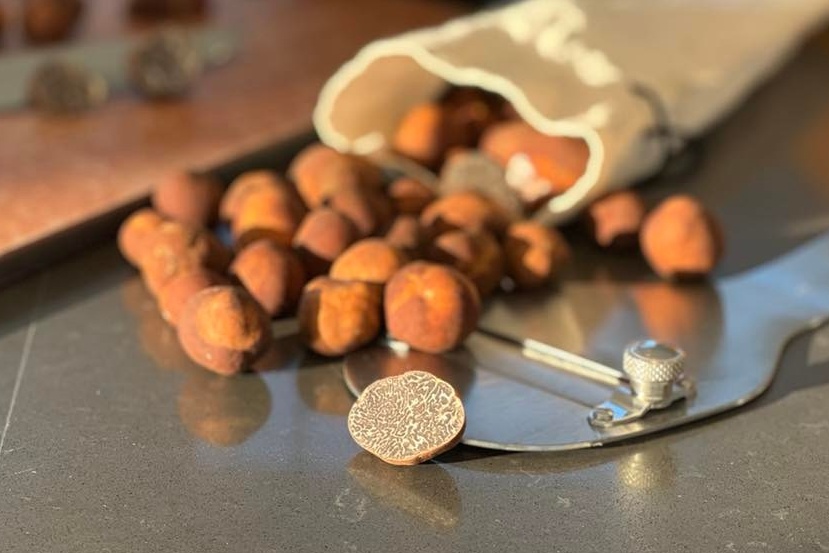Tasting truffle leaves an indelible impression on the taste memory. The very recent boom in truffle farming in Quebec will allow us to discover this spell in a local version in the coming years, since this mushroom, which grows underground, takes 7 to 13 years to develop.
Truffles Québec, a pioneer in the field, has developed three varieties. The Appalachian truffle was the first to be cultivated and the one to inaugurate the ball of derived products.
“There are more than 200 truffles in the world. There are perhaps ten in Quebec, but few still have commercial or edible potential,” mentions the president of Truffles Québec, Maude Lemire-Comeau. The Appalachian truffle is the first to be marketed by Les Truffettes, the company she co-founded a year ago and which is dedicated to processing products grown by the parent company.

PHOTO PROVIDED BY LES TRUFFETTES
Each truffle has its own aromatic line and its particularities.
Each truffle has its own aromatic line and its particularities. Native to North America, the Appalachian truffle is distinguished from the more well-known varieties, often black or white, by its cinnamon-colored color. “It is subtle, complex and refined,” also notes Maude Lemire-Comeau. It’s more of a nose than a palate. It’s really part of a new culinary identity. »

PHOTO PROVIDED BY LES TRUFFETTES
Appalachian truffle flavored oil is sold for $25 for 100 ml.
This local truffle is still produced in too small quantities to be sold fresh. However, Les Truffettes made it known with a first product, Appalachian truffle flavored oil. Based on cold-pressed organic sunflower oil from Quebec, this product recreates the taste of fresh truffle with natural flavors developed from plant distillates. We recognize notes of cheese, braised cabbage and garlic sautéed over low heat: a fleshy and subtle bouquet.
It is used as a finishing touch to top pasta dishes, risottos, pizzas, roasted vegetables, fish and tartars. It can also be substituted for olive oil in mayonnaise, a salad or to dip bread as an aperitif. Its curves go particularly well with fatty substances. Dare to pair with a Mimolette or gruyère cheese.
